Universal Aspirin Medicine

In addition to these, other properties have been found, so it has often been used as a universal drug. However, its use has also been discussed, on the one hand because until recently its mechanism of influence was unknown and, on the other, because it became widespread that its excessive use could have negative consequences.
First centenary of an old medicine
Aspirin or acetylsalicylic acid belongs to molecules called salicylates. These cyclic organic molecules can be found in nature. Willow (Salix alba) and Spiraea ulmaria, among others, are very rich in these compounds.
Greeks and Romans already knew the therapeutic properties of willow and used it as analgesic, anti-rheumatic and sedative, as well as against fever. However, XIX. Until the 20th century, when extractive chemistry was developed, it was not possible to identify and isolate the active principles below these properties. The first salicillin was obtained, but the effect of fever and inflammation was not at all good.
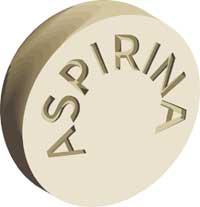
Two years later, in 1876 salicylic acid was isolated, much like the previous one, but pharmacologically more effective. The latter, due to its acidic nature, caused irritation or irritation in the mucous membranes, especially in the stomach. Therefore, in 1877 it was possible to synthesize its sodium salt, called salicylate soda, which was better against inflammations, but had a very bitter taste and disgusted patients.
In 1897, a young German chemist working in the laboratory of the company Bayer, Felix Hoffmann, managed to invent the industrial procedure of acetylene of salicylic acid, a new procedure that consisted in dealing with acetic anhydride in the presence of sulfuric acid that would act as a catalyst. This way you get a pure and stable product, acetylsalicylic acid.
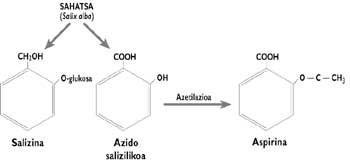
All tests carried out with this new product immediately showed that it was more effective than the previous ones. Therefore, in 1899 the company Bayer decided to sell this product and the new drug was called ASPIRIN. Its meaning is as follows: This is the abbreviation of the radical acetyl ‘a’, from the German ‘spir-’ Spirsaure, acid from the ulmaria Spiraea plant and the suffix ‘in’, frequently used in industrial chemistry
Aspirin has been very successful since its launch. Currently, in economic terms, the business is estimated at one billion dollars and its annual consumption is estimated at more than 40 thousand tons.
Aspirin: miracle and killer
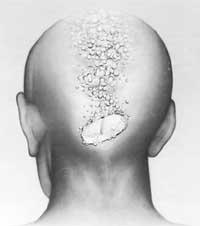
The effect of aspirin is closely related to the dose. Thus, at doses between 0.5-2.0 grams, aspirin moderate pain of muscular and venous origin (such as headaches), neuralgia or rheumes, pain from inflammatory reactions, fever, cancer pain, etc. can cure or at least sweeten. It also prevents the formation of thrombi in this dose, which reduces the risk of possible infarction or thrombosis.
At doses greater than two grams, aspirin has anti-inflammatory properties. In this respect, aspirin belongs to the group of non-steroidal anti-inflammatory drugs (AINS), equivalent to the rest of anti-inflammatory drugs (AIS), derived from steroid hormones.
The importance of the dose is evident in the case of gout. This disease involves the accumulation of uric acid crystals in the joints. In small doses (1-2 grams per day) aspirin reduces the excretion of uric acid from the urine, which causes a worsening of the patient, while in higher doses (more than 3 grams per day) uric acid is completely excreted in the urine.

As for the harmful effects of aspirin, the irritations it can cause in the mucous membranes and possible hidden bleeding are the main ones. In this sense, most aspirin manufacturers strive to improve the tolerance and absorption of aspirin. Thus, what was initially considered white powder was subsequently marketed as a pill and nowadays it seems that most producers have opted for solist or effervescent forms. The main advantage of these latter forms is that, when taken dissolved, it is passed before the blood, so contact with the mucous membranes is less and the effect is faster.
Moreover, the antiplatelet effect of aspirin (preventing the formation of thrombi) increases the bleeding time. This can be a problem with major bleeding, such as cerebral hemorrhages, menstrual bleeding, edema… There is also an allergy to aspirin, in which case it is skin rashes, damage to the respiratory system, hearing discomfort, etc. must be observed. It is estimated that it can lengthen pregnancy and pain caused by childbirth.
Finally, it is considered that it also affects the disease of Rey's syndrome, a disease that only the child suffers and that can cause death. However, if one takes into account the consumption of aspirin, cases of serious accidents would be minimal and it can be said that they are the counterpart of its effectiveness.
But how does this drug work?
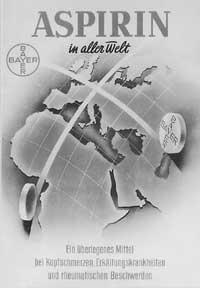
Below we will see in a simple way how the mechanism of action of aspirin occurs. To know this, we investigated the biosynthesis of substances that affect inflammation, that is, molecules by the complexity of prostaglandin. Prostaglandins belong to the family of local hormones and are found inside the body everywhere.
They are formed by oxidation of the fatty acid called arachidonic acid found in the plasma membrane; in order to release it from the membrane the enzyme phospholipase A 2 is necessary. Prostaglandins have multiple regulatory functions, such as platelet function, vein tone, etc. Moreover, arachidonic acid can be oxidized by two enzymatic systems:
- Lipooxygenase: transforms arachidonic acid into leukotrins, an important agent of inflammatory processes.
- Cyclooxygenase: transforms arachidonic acid into cyclic endoperoxides, the latter unstable, will provide prostaglandins, thromboxanes and prostazclines. All of them, together with leukotrins, form an eikosanoid group.
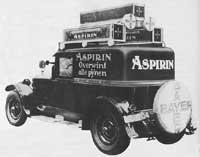
After a series of research, researcher Vane demonstrated that aspirin inhibits complex enzymatic cyclooxygenase and therefore endoperoxides synthesis. These endoperoxides, depending on the tissue, undergo a different transformation. There are two substances that have a totally opposite role: thromboxane A 2, which flows through the blood platelets in the presence of arachidonic acid and which is a powerful platelet aggregator; and protacline, produced by the walls of blood vessels, which hinders the retention of platelets and thrombi in healthy blood vessels, powerful antiplatelet. It has also been observed that aspirin, in small doses, inhibits the production of thromboxane in a stronger way than that of prostazicline, breaking that balance between both in favor of prostaziclins.
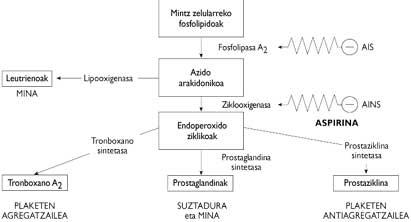

This is due, as for the action of aspirin, that the cyclooxygenase of platelets is more sensitive than that of the vascular wall; in addition, because of the lack of nucleus platelets, they cannot synthesize new enzymes, so the inhibition acts throughout the survival of the platelet, from about 8 to 11 days. Conversely, as the vascular wall enzyme will be restored earlier, the production of prostazicline will be reduced, which will prevent blockage of blood vessels and the formation of thrombi. Therefore, aspirin, in small doses, protects us from diseases caused by thrombosis, such as heart and brain thrombosis, diseases that today dominate industrialized countries.
Aspirin will persist in the future

But the therapeutic field of aspirin does not end here. Aspirin is currently being investigated, analyzing very diverse diseases:
- Cataracts: It would prevent the appearance of cataracts in small doses, increasing the resistance to opacification by acetylene of crystalline proteins.
- Diabetes: studies that show that prostaglandin E2 blocks glucose induced insulin secretion; taking aspirin would inhibit the synthesis of this prostaglandin.
- It may also have beneficial effects on diarrhea or diarrhea and osteoporosis.
- According to recent studies, aspirin intake would greatly reduce the risk of developing esophageal and colon cancers, the most widespread cancer in the world.
In recent years news about aspirin has increased considerably. About a century after its discovery, the limits of aspirin are yet to be set. Progress must be made on the path of aspirin.
Buletina
Bidali zure helbide elektronikoa eta jaso asteroko buletina zure sarrera-ontzian











